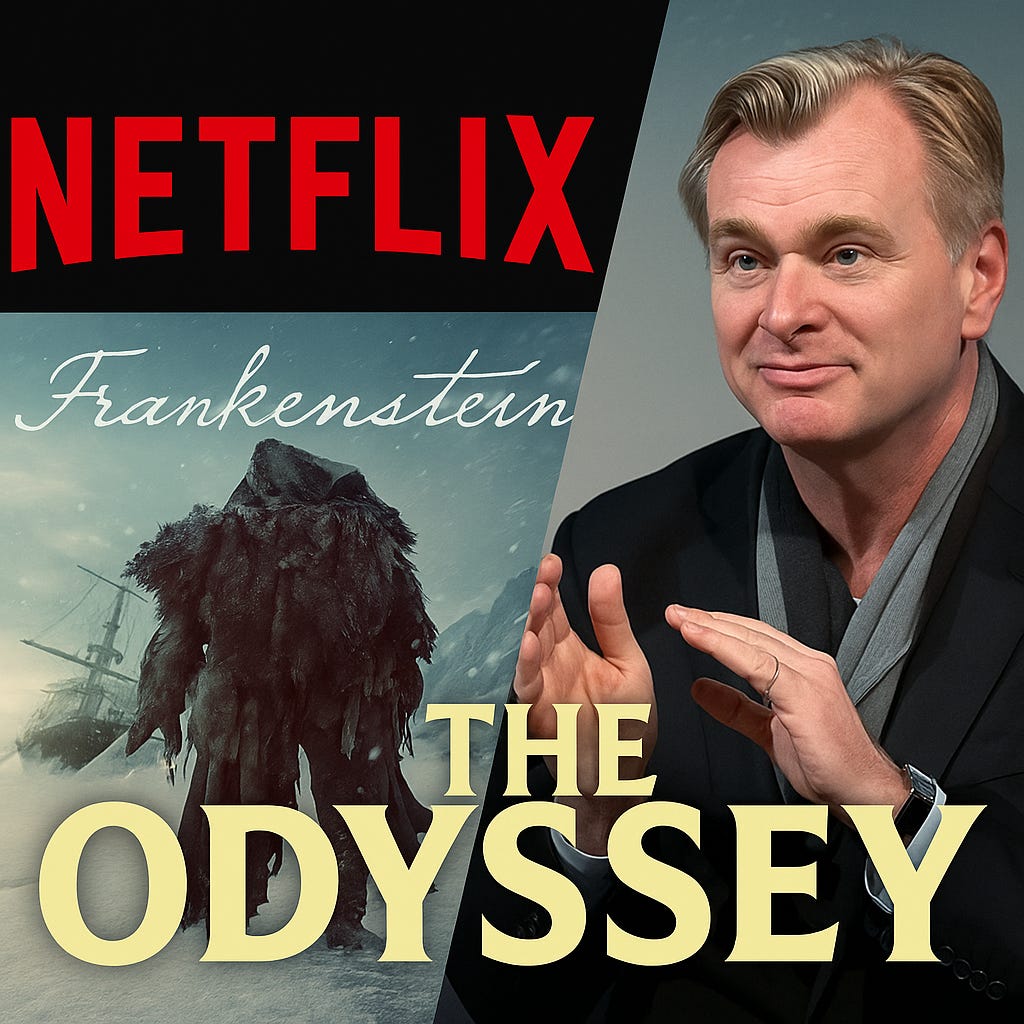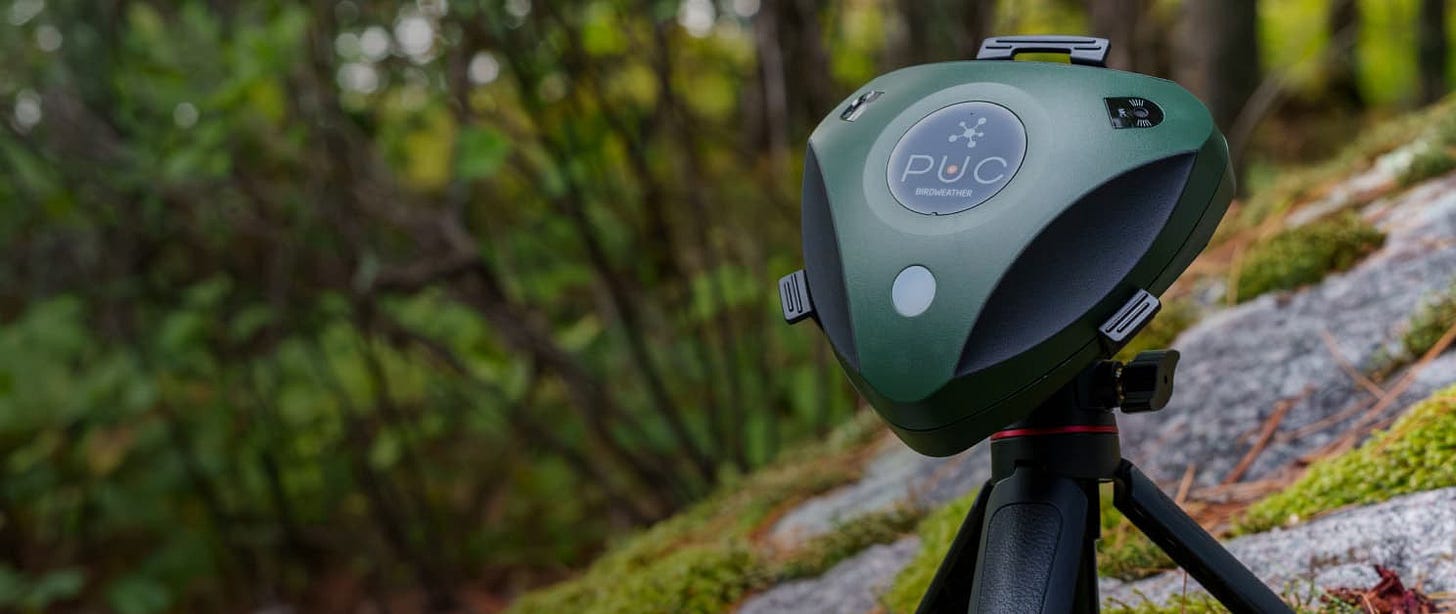We’re All Living in a Frankenstein Sequel
Mary Shelley's Mirror, Nolan’s Voyage, Netflix’s Law
This week brought a decisive shift in the creator landscape.
Netflix, the same studio that disrupted distribution with streaming, just became the first major player to publish a rulebook for generative AI in production. For filmmakers, editors, and VFX teams, the message is clear: AI isn’t a free-for-all anymore as we enter the compliance era.
On platforms, YouTube’s Hype tool expanded globally, giving fans new power to boost smaller creators into discovery feeds. TikTok, meanwhile, is reshaping its own ecosystem by adding richer direct messaging features and voicenotes.
In theaters, Guillermo del Toro’s Frankenstein premiered at Venice, where the director denounced the film’s AI allegory status.
We’re also keeping our new segment, Cut of the Week, alive. This week: Drex Lee, the one-take stunt wizard proving you can shoot spectacle with nothing but a smartphone.
Headlines at a Glance
A24’s Rise: Independent Studio Grows into a $3.5B Powerhouse
A24 continues championing auteur-driven cinema while scaling up, launching AI R&D, and exploring video-game adaptations amid tension between indie roots and commercial expansion. Read moreNetflix Snags David Fincher’s The Adventures of Cliff Booth
Fincher directs Tarantino script and Brad Pitt returns in this Once Upon a Time… in Hollywood sequel on Netflix; filming is underway in California, budget pegged at $200M. Read moreIShowSpeed Takes Crown as 2025’s Most Influential Creator Rolling Stone names the streamer the year’s top digital creator, signaling creator culture’s overtaking of traditional celebrity.Read more
Asia leads a $18B computational photography boom Accounting for nearly half of the global AI-camera market, driven by demand for AR lenses and emotionally resonant visual tools.Read more
Netflix’s Algorithmic Handshake
Netflix has built its brand by tearing up rulebooks. First by killing late fees. Second, by rewriting how we watch TV.
Now, in a twist that feels almost paradoxical, it’s writing a rulebook of its own, for AI.
On August 26, the company published its first set of guidelines on how generative AI can and can’t be used in its productions. No splashy announcement or a glossy keynote. Just a memo. Plain, almost bureaucratic.
And yet the implications are enormous.
The document reads like a modern studio code. Noise cleanup is fine. Early concept sketches, also fine. But touch the face of an actor, or generate something that’s story-critical, and that’s not allowed.
The timing wasn’t an accident. Earlier this year, Netflix admitted that it had leaned on generative effects in sci-fi series The Eternaut. That decision sparked backlash among filmmakers, who saw it as a shortcut disguised as innovation.
The new policy feels like damage control and boundary-setting rolled into one: Netflix both acknowledging the tool and corralling it.
So, why does this matter? Because for the first time, a global streamer has put into writing what others have only whispered: AI can’t be a co-author. At least, not yet.
The move shifts creative control upward. Filmmakers who collaborate with Netflix now operate under a framework that defines where human judgment ends and machine assistance begins.
And there’s a bigger story here: the Wild West era of AI in film might already be closing.
What began as an experimental free-for-all, messy, exciting, ethically fuzzy, is now edging toward compliance culture. Netflix, of all companies, is the sheriff nailing rules to the saloon door.
The question is what happens when everyone else follows.
Will studios start competing not just on story and spectacle, but on the strictness, or looseness, of their AI policies?
Will creators try to smuggle AI workarounds past moderators?
Black market AI hacks?
Read more
Christopher Nolan’s Begins Latest Odyssey with DNEG
Christopher Nolan’s latest epic, The Odyssey, wrapped in early August and now sails into post-production. At his side is DNEG, the British-Indian VFX powerhouse that has been his visual partner for two decades.
The cast is stacked: Matt Damon as Odysseus, joined by Tom Holland, Anne Hathaway, Zendaya, Lupita Nyong’o, Robert Pattinson, Charlize Theron, (..breathe) and… Benny Safdie, John Leguizamo, Elliot Page, Himesh Patel, Samantha Morton, and Mia Goth.
And.. Jon Bernthal.
Shot on 70 mm IMAX across Morocco, Greece, Italy, Scotland, Iceland, and Western Sahara.
It’s Nolan’s ninth collaboration with DNEG, a relationship that began with Batman Begins and has run through The Dark Knight, Inception, Interstellar, Tenet, and Oppenheimer.
Inception earned DNEG its first Oscar, but more importantly, cemented the studio as Nolan’s exclusive VFX partner.
At a reported $250 million, The Odyssey is set to be Nolan’s most expensive film to date.
But if history is any guide, his partnership with DNEG will once again turn staggering budgets and experimental formats into something audiences haven’t quite seen before.
Read more
More platform news
YouTube launches Hype globally: A new feature letting fans boost smaller creators’ videos, turning community energy into algorithmic lift and discovery power. Read more
Showrunner AI Promises to Be ‘Netflix for Indie Animation’
On August 29, creator Edward Saatchi unveiled Showrunner, a Discord-based generative AI studio tool that lets users build short animated clips by choosing art styles, characters, and dialogue prompts, creating a collaborative sandbox for indie storytellers. Read morePerplexity Launches Revenue‑Share AI Search for Publishers
AI search startup Perplexity introduced a bold revenue-sharing plan, committing $42.5 million to compensate publishers. Read more
Netflix’s Adolescence Gets Real-Life Documentary from Louis Theroux
A documentary spin-off by Louis Theroux, examining online misogyny, goes into production to accompany the hit drama’s impact. Read more
Guillermo del Toro’s Frankenstein World Premiere at Venice
Guillermo del Toro’s long-awaited Frankenstein finally rose from the slab on August 30, 2025, premiering at Venice. The cast is also stacked: Oscar Isaac as Victor Frankenstein, Jacob Elordi as the Creature, plus Christoph Waltz, Mia Goth (yes, again),and Charles Dance.
Shot across Toronto, Edinburgh, and Stamford, the film is, in del Toro’s words, “incredibly emotional”, not a monster movie but a meditation on creation and consequence.
At the Venice press conference, del Toro turned from monsters to machines. Frankenstein has always been a parable about man and machine, so del Toro could hardly be surprised when the AI questions came.
He insisted the film isn’t a metaphor, but a warning: creation without responsibility is the real horror. In filmmaking terms, outsourcing imagination to algorithms risks sanding off what he calls “human error, accident, and imperfection”.
The timing couldn’t be sharper. Studios are drafting AI policies, platforms like YouTube are already retouching videos automatically, and here comes Frankenstein, both a Gothic spectacle and a mirror held up to 2025.
It opens October 17 in limited theaters before its global Netflix release on November 7.
Read more
Cut of the Week: Drex Lee’s Epic 1-Shot Hellcat Drive-Off
The Video:
How to FILM a HELLCAT Drive OFF by Drex Lee. A smartphone-shot behind-the-scenes sequence that tracks a Dodge Hellcat peeling away.
Performance:
Over 300 million views, making it one of Drex’s most-watched videos and cementing his reputation as the poster child of mobile-first filmmaking spectacle.
What Worked?
Half-and-half tension:
It isn’t a pure one take. The first half is the BTS, the second half is the resulting shot. That split keeps viewers locked in, curious to see the payoff.
Smartphone cinema, stripped down:
Shot on a phone with no extra lenses or lights, it shows you can make cinematic content with almost nothing but the device in your hand.
No-baggage storytelling:
No voiceover, no blaring soundtrack (until the resulting shot), just the process and the result. The BTS flows straight into the finished shot, creating a clean feedback loop that’s rare on era of YouTube where creators love to babble on.
Own your niche. Drex leans into the one-take stunt aesthetic and now owns it online. Filmmakers should consider: what’s your visual signature?
The video doubles as bite-sized film school: showing setup and payoff back-to-back, with no fluff, making cinematic technique instantly clear and repeatable.
Creator Product Updates — New Picks
Google Vids Gets AI Avatars & Image‑to‑Video Tools
Google’s Vids video editor (part of Workspace) now includes AI avatars, image-to-video generation via the Veo 3 model, and automatic transcript trimming plus a free consumer version without AI features. Read more
TikTok Adds Voice Notes & Multi‑Media in DMs
TikTok now lets users send up to nine images or videos and 60‑second voice notes in direct messages, pushing the app beyond pure video to a richer, more interactive messaging hub. Read more
Retail Therapy
BirdWeather PUC: $259
An always-on, solar-powered device that records and identifies birdsong with AI, uploading it to a global sound-mapping database. Link
Fujifilm X-HALF Edition: $950
A limited 90th-anniversary release: Fujifilm’s tiniest interchangeable-lens camera body, designed to shrink X-Series power into a truly pocketable form. Link



